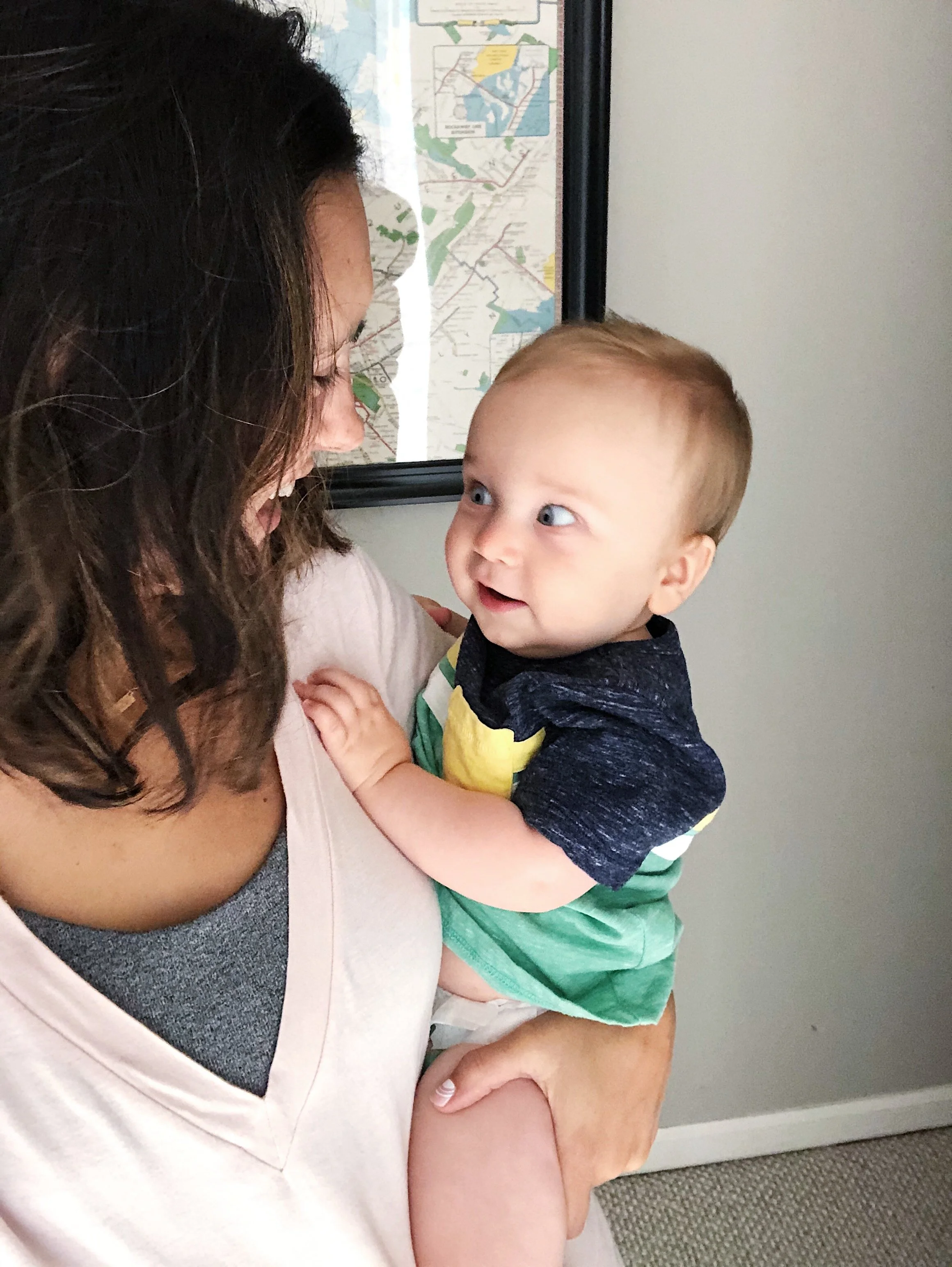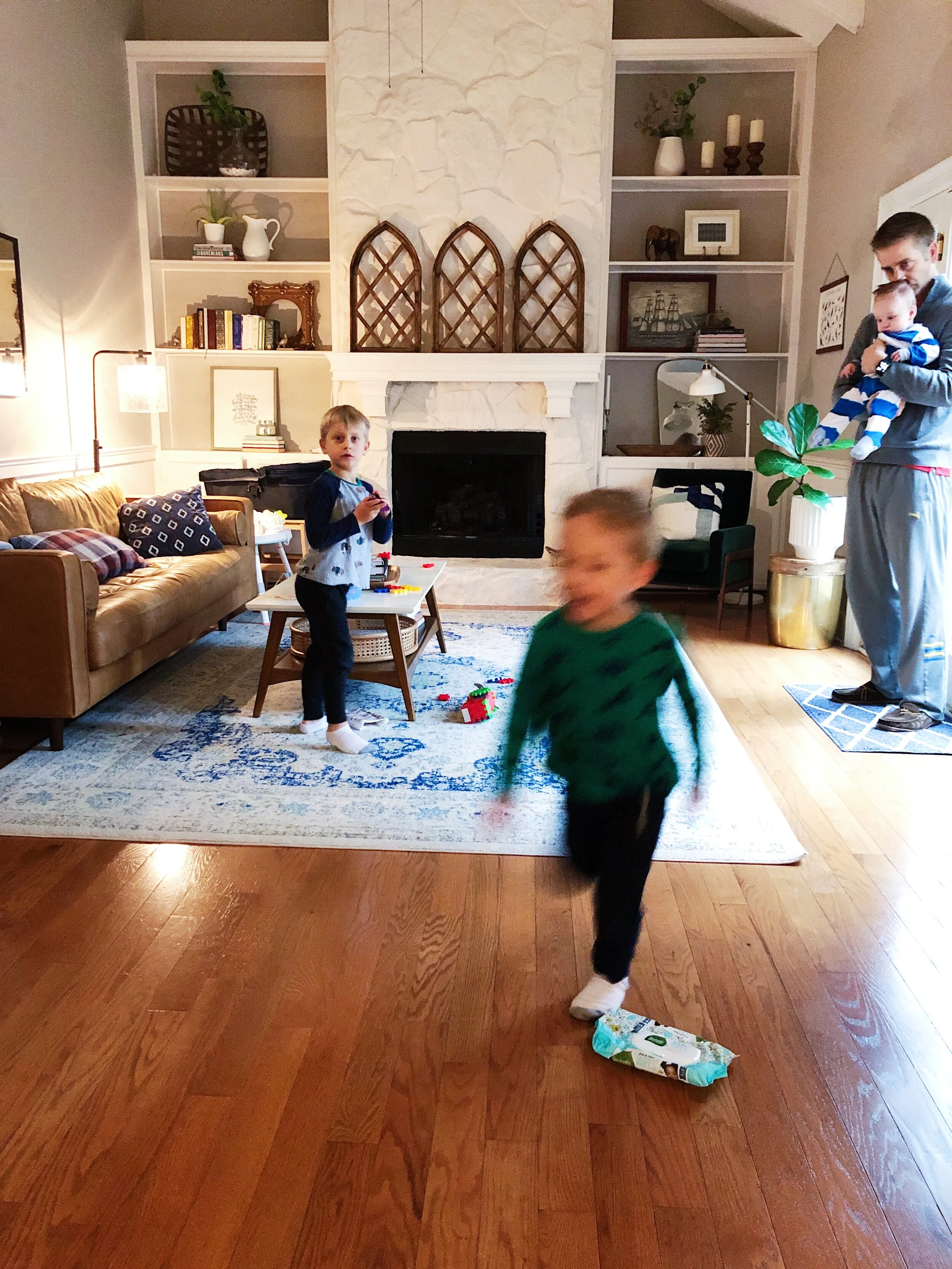Upcycled Buffet Table.
/When we moved into our house a little over a year ago, we were given a set of dining room furniture. Yes, given. An entire set of furniture. We were crazy blessed, considering we had no furniture to our name at the time. While the furniture was extremely well-made and in mint condition, it was a little old-fashioned for my taste. Visions of DIY projects filled my dreams, and I had grand plans to flip this furniture and give it a shabby-chic makeover. Little did I factor in the 40+ other home improvement projects, a husband in and out of town with his job, and getting knocked up again into that plan. Those things shifted the priority list, and for over a year I stared at this furniture day in and day out, as it towered over me with its mahogany ferociousness.
It seems like it would have a frenchy accent, right?
I would like to say there's a happy ending to this story, but I'm still mid-story. I managed to finish re-doing the dining room buffet before this little guy arrived, and I am so thrilled with how it turned out. However, I still have a gigantic china cabinet and dining room table to finish... so I'm about 1/3 done with the set. But still! Progress!
Here is the "before":
Here is the piece with 1 coat of paint:
And here is the piece with 2 coats of paint:
And here is the "after":
The Process.
To achieve the antique look, I used Annie Sloan Chalk Paint in Pure White. I applied two coats of the paint, using Purdy 1.5 and 3-inch brushes, letting the coats dry for a few days in between. Using a course grade of sand paper, I sanded the areas I wanted to distress, especially the decorative flourishes in the wood. I wanted those to stand out, so I really went to town on those sections. (If I were doing this project again, I would use an electric sander because this part was very labor-intensive).
Then I used the Minwax Wood Finishing Penetrating Stain in Ebony and gently applied it to the entire piece. I used an extremely minimal amount, and even then, I worked in small sections, applying the stain with an old rag and then immediately wiping it off. I used gloves for this part. I found that using the Annie Sloan Clear Wax to wipe off the stain was the perfect way to minimize the intensity of the stain while still letting the pigment soak into the sanded areas. So I went back and forth with two rags, applying the stain, and then rubbing the stain off with the clear wax. This process was the most artistic part of the whole project, because I could decide how dark/light I wanted the stain to look and soak into the wood. The more stain you use, the more distressed and aged the piece looks. The less stain you use, the brighter the white paint looks. So it's definitely a choice. I spent a lot of time pouring over Pinterest DIY projects (check out my dining room board) to figure out how I wanted my piece to look.
I finished the buffet with another coat of clear wax over the entire piece, to seal everything. Then I spray painted the hardware with Rust-Oleum Metallic spray paint in Oil Rubbed Bronze. Overall, I am super pleased with the buffet and I feel like achieved that french provincial look I was going for.
I chose to keep the top of the buffet the original wood, because there was a decorative feature in the grain that I think is super artistic and beautiful. I think the dark wood on top anchors the piece and keeps it feeling "dressy". I decided to move the furniture out of my dining room because it was simply too crowded in there. Now it lives in the living room, and I use it as a bar when we have guests over.
Project Cost:
Buffet - FREE
Hardware - FREE (kept the old)
Purdy 1 + 1/2-inch Paint Brush - $9.86
Purdy 3-inch Paint Brush - $15.33
Annie Sloan Chalk Paint in Pure White - $34.95
Annie Sloan Clear Wax - $24.95
Minwax Wood Finishing Penetrating Stain in Ebony - $11.00
Rust-Oleum Metallic spray paint in Oil Rubbed Bronze - $7.77
Total Cost: $103.86
I can't give an exact estimate of how long a project like this should take, because I took a month-long trip to New York in between starting and finishing. Oops. Talking about procrastinating. So in theory, this should probably take 5-7 days total, including the drying time, but it took me all summer long to actually get this thing moved back into my home.
Overall, I am really pleased with this furniture makeover. Now I just need to have a paint party to complete the rest of the dining room furniture! Who wants to come over?? I'll buy the pizza and brew ;)
P.S. - When I painted my son's toy cabinet emerald green, and if you're up for braving it, how to make your own chalk paint.



















































